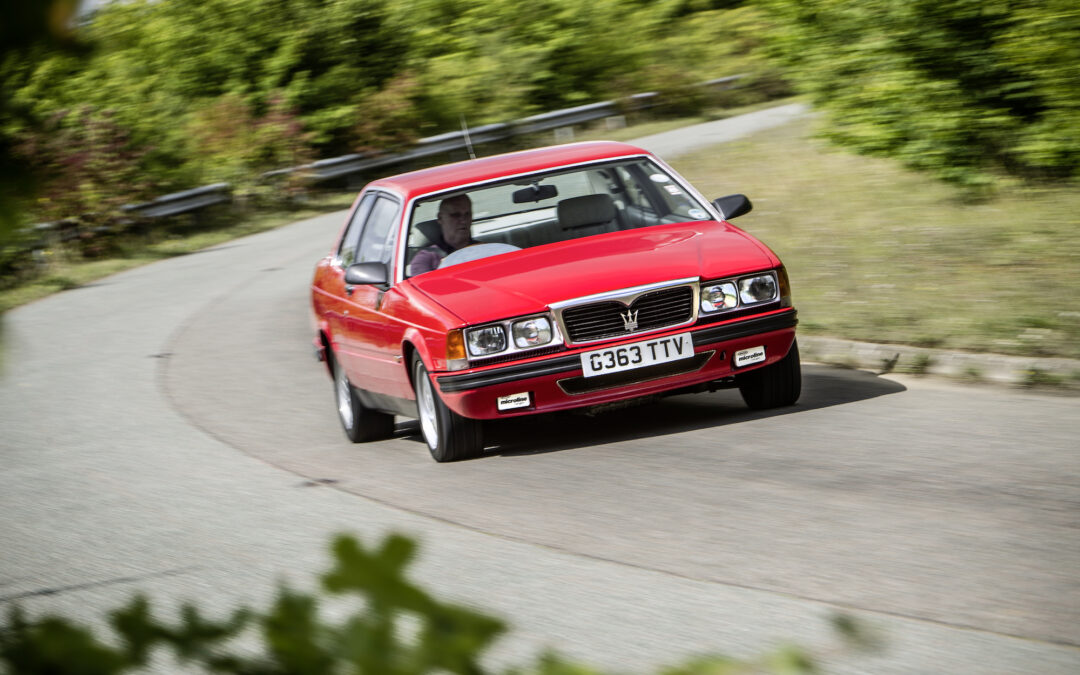[ Second Chance ]
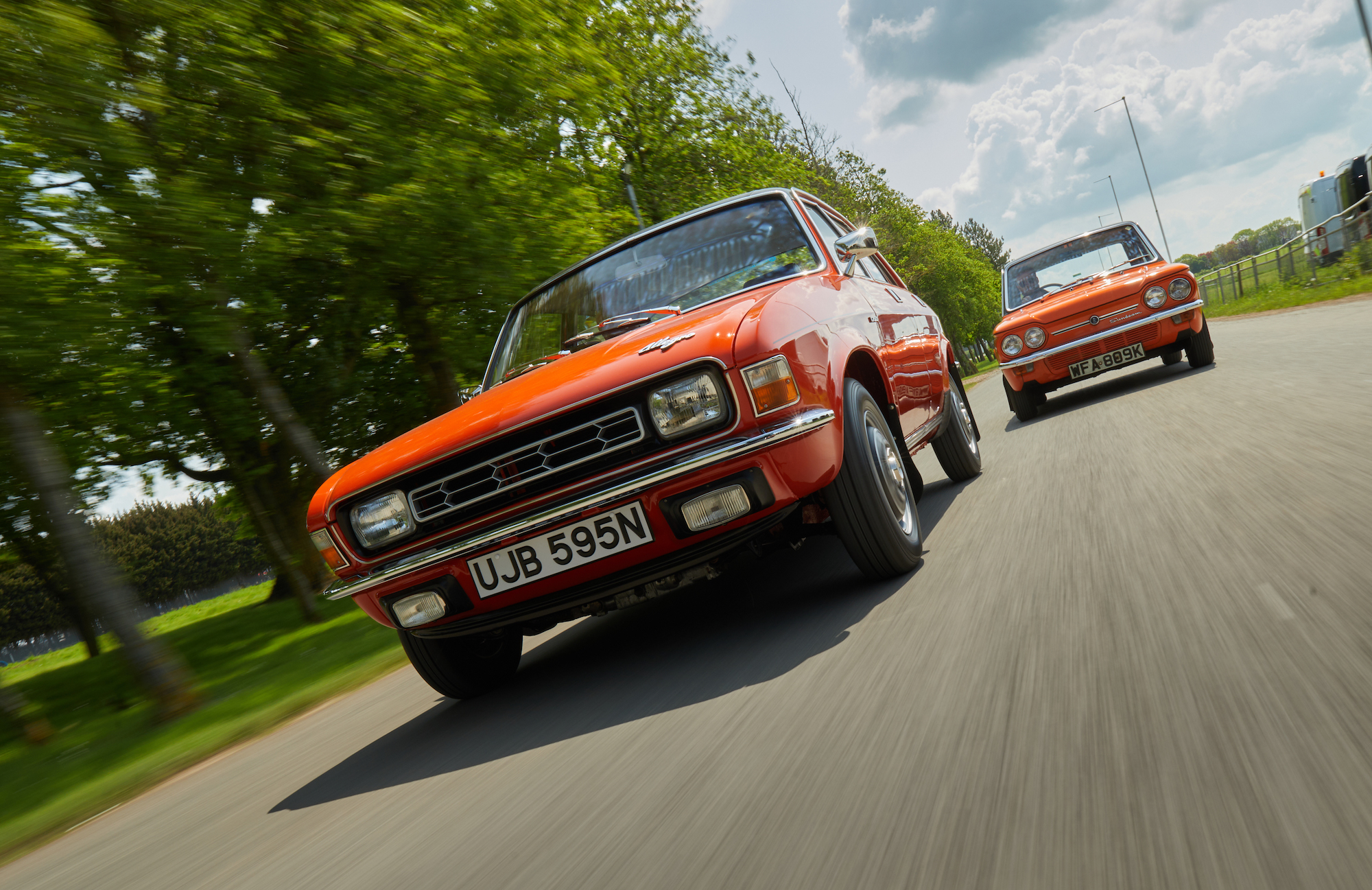
Were they really that bad? Test
These five cars dragged their manufacturers’ names through the mud. But do they deserve their reputations? We assess the evidence and find out
Austin Allegro
The charge sheet
Replaced a consistent bestseller (Austin’s 1100/1300) with a total flop. Cost-cutting accountants’ interventions ruined designer Harris Mann’s intended style, and an often-striking and underfunded workforce delivered poor build quality. Could have been a British Citroën GS, but ultimately sunk Austin as a pioneering innovator.
The case for the defence
In 1973 the barriers to improving the Allegro were significant. As development had proceeded, Leyland accountants, keen to control costs, instructed engineers to install the existing E-Series engine, a long stroker better suited to a van or large car, and the low bonnet line as originally envisaged by designer, Harris Mann and his team was ditched – not the best template. It was chunky and practical, not rakish or slick, there was no hiding the shape. Today though, it doesn’t lack visual excitement with a vinyl roof and sill trim breaking up the flanks, and those futuristic wheels. Yes, it looks like a cleverer package than it is, but it also looks like a car with attitude, the years have been kind and I can sense what the stylists were trying to achieve. It’s punchy.
I settle in behind a dash full of instruments. Can the E-Series deliver? Not quite, sadly. The original range-topping E-series Allegro was released with a single carburettor and its 75bhp pushes enough power to the front wheels to make it brisk, but I can’t see how it would cut it in the year the Dolomite Sprint was also entering the marketplace. Back then, at £1367, beating competitors off the line was essential for this, the flagship Allegro.
In 1974 Leyland added a carburettor, and took away the rounded-square ‘quartic’ steering wheel. In doing so it took power from 75 to 90bhp and created the car they should have launched.
I’m enjoying driving it, but there is insufficient fastness. The 90bhp model might have avoided the bad press, but the positives are there and they speak loudly to me today. Driving it is huge fun. Performance is perky, the ride is smooth and cornering extremely competent.
The styling, in the face of today’s bloated SUVs, is cute and funky and the interior ingeniously capacious. I even love the quartic wheel, it makes you drive like a racing driver, crossing your arms over in the bends.
It only takes a few odd ingredients to spoil a recipe. Had Leyland launched the Allegro with twin carburettors, a smooth steering wheel and built it properly, the world would have woken up to better reviews in the papers, followed by bigger sales in the showrooms.
The Verdict – Was it really that bad?
Sadly yes, although frustratingly it had all the ingredients to be a good car. BL just didn’t seem to be able to cook them properly. The result couldn’t cope, especially in tariff-free Common Market conditions. Wouldn’t start in Scandinavia, overheated on the Riviera, undercut by Fiat and Renault and showed up in every way by the Citroën GS. Tellingly the Maestro which replaced it was much more conventional.
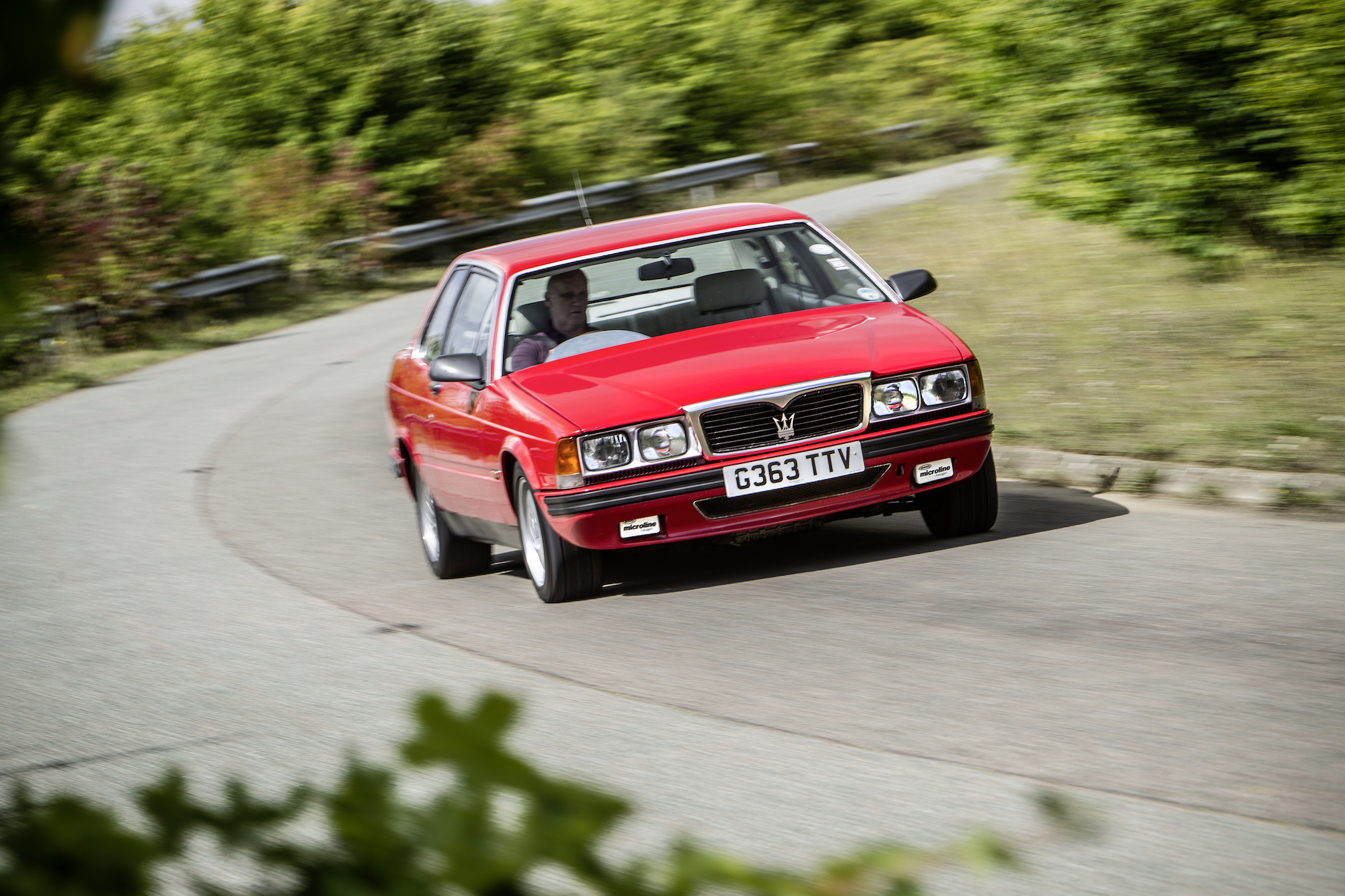
This is an image caption test.
Maserati Biturbo
The charge sheet
Followed up a bloodline of beautiful thoroughbred GTs with an unreliable, nondescript, ill-handling saloon with an overly showy interior, built with a pile-’em-high, sell-’em-quite-cynically-expensively’ mentality. Tarnished the Maserati brand for a decade before Fiat rescued it.
The case for the defence
It would be easy to dismiss the Biturbo range – plenty have. Damned for their squint-from-the-right-angle resemblance to 3 Series Beemers, and blighted by early engine reliability issues and later rust problems, they have found few fans in the classic world. However, I know a few dealers who have taken advantage of this and bought them for peanuts to run until they dropped because they loved how the Biturbo drove and enjoyed the lavish cabins. There are two- and four-door versions, soft-top Spyders (which command the usual 50 per cent price premium), plus the super-sized 228 coupé launched in 1987, ten inches longer and six inches wider than earlier two-door Biturbos and targeted at the Mercedes luxury coupé market.
This 228 is one of just 469 built and packs a heady 255bhp from its 2.8-litre version of the twin-turbo V6 that gave the Biturbo range its name. That makes it a truly quick car, but as with many turbo installations, it’s one with a split personality. Anyone could jump in a 228 and drive it to the shops; it’s so docile, quiet and smooth that you could be in a Toyota or – dare I say it? – a BMW 318i, albeit one with every box ticked on the options list. I’m even moved to say that this car’s four-speed automatic box suits it. The engine only gets growly and raucous when you give the pedal a proper shove; then the 228 changes character and gathers speed at a rate completely at odds with its understated appearance. And the harder you push and the faster you go, the better this car feels – it’s a real street-sleeper. Yet it never seems unruly or dangerous – the tactile steering feels natural, with a good range of movement in the adjustable column. There’s more than enough grip from the tyres – which on the 228 are fatter at the back to counter criticism of earlier Biturbo tail-happiness – and the strong, progressive brakes inspire confidence. And I still don’t mind that it’s an auto.
‘No, it wasn’t the most beautiful of Maseratis, but it followed a stylistic theme’
I’m not overwhelmed by the styling; there’s a little too much rear overhang and the flanks might have been improved by tapering in a bit towards the rear, but other Biturbos are better resolved in this aspect so there’s plenty of choice. Just avoid the four-door models, which are the most prone to unfriendly Germanic comparison and will always struggle to be saleable, never mind collectable.
The verdict – was it really that bad?
Actually no. Took a while to get into its stride, but sold in large numbers – especially in the US – to keep Maserati alive before Fiat took control in 1993. Yes, it was unreliable, but no more than any Maserati before it. No, it wasn’t the most beautiful of Maseratis, but it followed a stylistic theme you can trace back to the Kyalami and Mexico of the Seventies. Its twin-turbo V6 was also a pioneering piece of engineering.
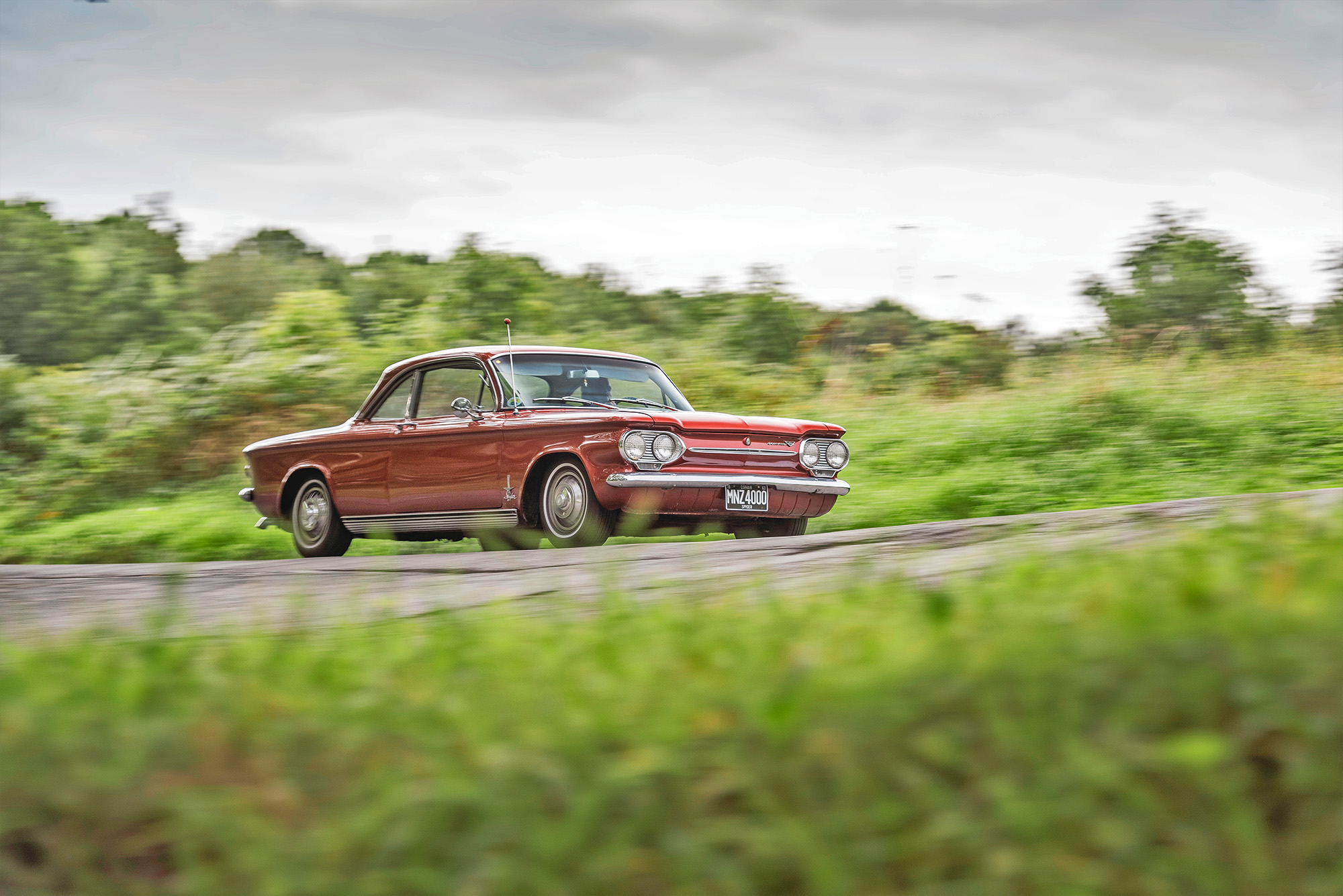
Chevrolet Corvair
The charge sheet
Attempted to bring European compact-car virtues to an American audience, but was a wallowing rear-engined barge so ill-handling and dangerous it inspired tranches of safety legislation. And as if to amplify the danger, GM then added an optional newfangled turbocharger…
The case for the defence
Pulling away onto the rural lanes of South Yorkshire, the odd-looking yet precise-feeling curved gear lever slotted home, the turbocharged Chevrolet Corvair Monza Spyder sounds very much like a Porsche 911, although the drum brakes aren’t completely confidence-inspiring in modern disc-braked traffic. They’d be considered good for their era, although they’re a reminder of one aspect of American engineering holding the Spyder back from true comparisons with European sports cars. But the real surprise comes as the traffic clears. This may be one of the first examples of a production turbocharged car available, and yet as I reach 2750rpm and the flat-six chunter is joined by a distant gale-like howl from behind the rear seats, I realise that it doesn’t actually suffer from turbo-lag. It’s probably because it’s a relatively low-pressure turbocharger more akin to the light-pressure units used by Saab and Volvo in the late Eighties, and doesn’t actually help the engine liberate much by way of power – 150bhp – compared to more performance-focused turbo-cars. Instead of a sporty 911 jiggle, it immediately acquits itself as a superb highway cruiser. It rides beautifully, gliding along serenely, the turbo-torque meaning revolutions can be kept low.
With this highway-orientated character also comes an unexpected sense of stability at the rear, especially under acceleration. The Corvair was much-criticised when new, on account of trailing-arm suspension that seemed poorly-located, making the car hard to control if the rear tyres broke traction. This might have surprised its creator, Ed Cole, because he’d derived the design from – and tested the Corvair’s engines in – a Porsche 356. However, just before its launch, GM’s bean-counters decided the suspension was too complex, and simplified it as part of a rationalisation process, removing its anti-roll bars, saving a grand total of $7 per car. All this was made worse by lack of awareness of the correct tyre pressures by owners and garages. As part of its sportier makeover, the Monza Spyder reinstated them, as well as stiffer springs and dampers, ahead of their standardisation across the range in 1964.
‘Chevrolet made a virtue of the Corvair’s budget-priced simplicity when new’
However, by this point the damage was done. Ralph Nader had already investigated GM’s handling of the Corvair’s suspension design in the first chapter of his 1965-released Unsafe At Any Speed: The Designed-In Dangers of The American Automobile. The whole industry came in for criticism in the book for prioritising cost-cutting over driver and pedestrian safety, but the prominence of the Corvair within it caused customers to avoid the car in particular.
This all weighs heavily in my mind as I pitch the Corvair into a downward-winding hillside bend. The single-circuit brake system needs pumping ahead of hard deceleration, making the process fraught enough, and although the gear lever is slick and linear in its motion, it’s fairly long-travel and can’t be rushed. However, all these criticisms could be levelled at old Porsches too. What really undermines the Corvair’s sporty credentials is actually its steering.
At four and a half turns lock-to-lock, it’s just too slow to handle sudden camber-changes or react to a fast, twisty road. The recirculating-ball setup is also vague, and the big wheel leaves you having to flail at it, dragging the car round corners rather than assuredly guiding it as you would with a Porsche.
Chevrolet made a virtue of the Corvair’s budget-priced simplicity when new, pointing out that it didn’t need power steering on account of the lack of weight over the nose, while clearly giving it a large wheel and low-geared steering to lessen the effort needed to turn it. I’m gripping the wheel hard to keep me in place too – amazingly these flat-bottomed seats with precious little lateral support were the ‘sports’ option – standard Corvairs got a slippery full-width bench seat.
The verdict – was it really that bad?
Alas yes – although not in concept. Like the Allegro, had GM built what Cole had designed, it might have been a great car. But it didn’t. Lethal suspension, long-winded steering and sloppy ergonomics resulted in an out-of-control runaway mine-train of a car. However, the backlash it prompted may well have been the wake-up call the US auto industry needed, especially judging by some of the great cars it created in the late Sixties.
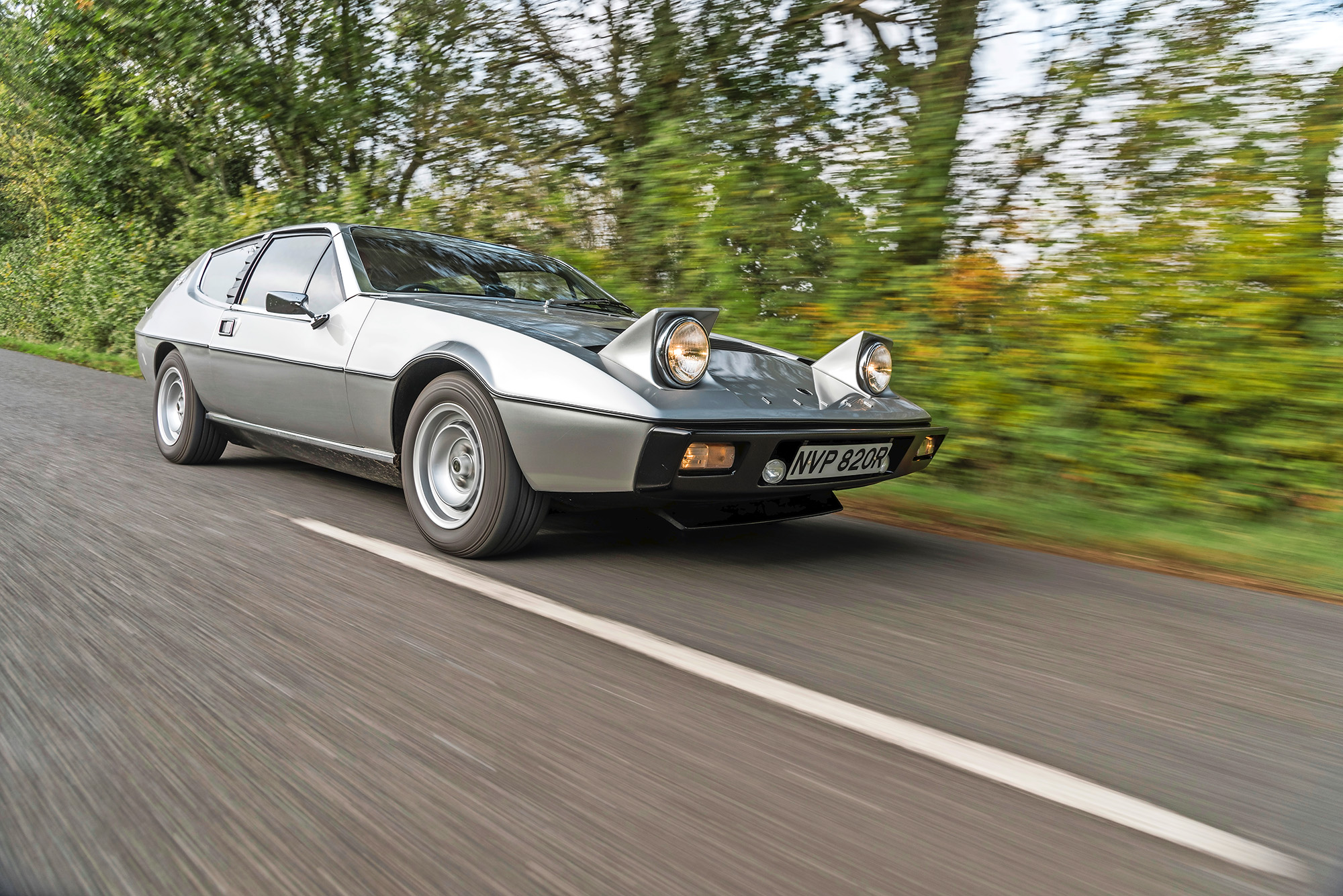
Lotus Elite 500-series
The charge sheet
Squandered Lotus’s reputation for building exquisite, simple, lightweight sports cars with a gigantic, hefty luxury GT with the wrong engine for its class and design flaws that practically acted like a series of self-destruct mechanisms.
The case for the defence
Fittingly for the most expensive four-cylinder model then on sale, the 2.0-litre engine dominates first impressions. It rushes to life with a first surge at 3000rpm that establishes its voice in a tightly-controlled tenor that first balances the exhaust burr, then overtakes it as the intake thickens a thousand rpm later. Keep the accelerator down and the double overhead cam four cylinder motor strengthens as the needle swings towards 5000rpm and peak torque. Sound and pedal response sharpen, daring me to climb further still.
Volume swells as I venture further, summoning the exhaust back into an increasingly strident soundscape. The tune behind my head is plainer now, a supporting role to an engine note that jumps pitch and hardens to match urgent, cresting acceleration that infuses the estate-like four seater with sports-car spirit. Squatting into its rear springs for the final run towards peak power – delivered on the cusp of the tachometer’s orange paint at 6500rpm – the Elite lifts its glassfibre nose and lightens the rim in my palms, sniffing at cambers as the whole car comes alive.
Such high-rev responsiveness has a downside, which is exposed when traffic starts to build. Though the Elite boasts enough power to strike within 10bhp of its closest competitor, the 165bhp Porsche 911, its 135lb ft maximum torque lags behind the comparatively priced Dino 246GT sports car and the 5.3-litre V12 installed in the Jaguar XJ-S. Compounding the problem, the modest torque peak appears too far through the rev range for urban driving, forcing the Lotus to lug against its 3.7:1 final drive. A 4.1:1 later appeared in the options list but stirring the wood-topped gearlever offers the only immediate solution.
At urban speeds the rim remains heavy and ponderous, kicking to life only to drag my wrists towards potholes, conspiring with the low torque levels and long gearing to form a stressful inner-city companion. But beyond, all is forgiven, the steering shedding its heft as I pass 35mph to reveal a constant conversation of changing surfaces and shifting grip levels. The messages are subtle and nuanced, acting in shifting weight and bubbling nuance to telegraph everything below the all-round 205/60 tyres. Suddenly the Elite feels like a Lotus.
‘Innovation dripped from every corner of Oliver Winterbottom’s first production-car design’
I turn and the rim skims onto lock then tightens, using weight to hone its messages into sharp, uncluttered beats that distil the front-end grip. Tuning into the car beneath me I feel the same constant patter through the floor and the upright seat, explaining the action of the Armstrong telescopic dampers over bumps and confirming what I can already see across the yawing bonnet. Once through the slight bodyroll deadzone that initiates fast turns, the wishbone front and radius arm rear independent suspension offer soft-edged precision.
Innovation dripped from every corner of Oliver Winterbottom’s first production-car design. Body construction was by Vacuum-Assisted Resin Injection to improve quality, with steel bars in the doors to offer side impact protection, while the windscreen was bonded in place to increase torsional rigidity and drop wind noise. A luxurious Giugiaro cabin with space for four adults should have sealed the deal, yet sales were slow.
Market positioning was a challenge. Fellow four-cylinder sports car from Porsche, Alfa Romeo and Jensen-Healey all sat four figures below even a basic Elite and grand tourer buyers expected larger engines. Competing with the similarly priced BMW E9 range, Citroën SM and Porsche 911, even a fully specified Elite was doomed to give best to the six-cylinder cars. Production figures reached just 2398 cars before Lotus debuted the upgraded Type 83 Elite in 1980.
The verdict – was it really that bad?
A hung jury: on the one hand, there’s no avoiding the fact that on top of being very expensive for a four-cylinder car, lacking the torque expected of its class and being hard work to drive, the Elite was also full of design flaws. Troublesome gearboxes, temperamental engines, seizure-prone inboard rear brakes and an ungalvanized steel chassis insulated with moisture-trapping felt made for a nightmare ownership prospect.
And yet, it was also a different kind of GT for the post-oil crisis age. Relatively frugal, slippery, and possessing class-leading handling, it set a low-drag, high-revving template for future performance motoring that others, most notably the Japanese, would use to define the Eighties and beyond.
We’ll let it go with a hefty fine, some community service, and the promise to come back as an Excel…
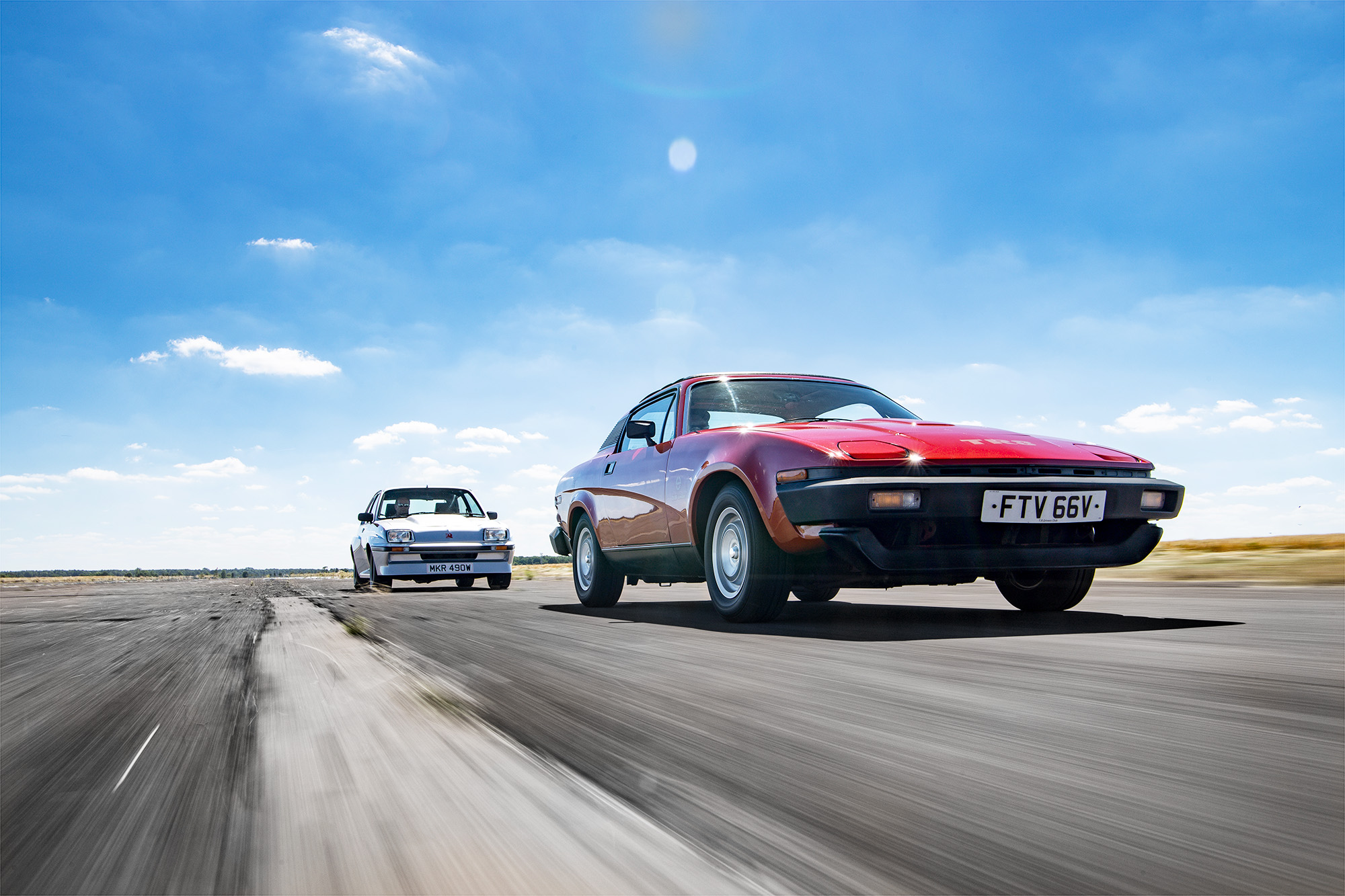
Triumph TR7
The charge sheet
An improper entry to the Triumph TR bloodline, replacing the gutsy straight-six TR6 with a weedy single-cam four-cylinder wedge that drove like a saloon. Was supposed to be the future for the British sports car against a backdrop of superannuated Spitfires, Midgets and Bs. Failed to outlive them, killed Triumph’s credibility and took mass-market British sports cars with it for 15 years.
The case for the defence
The Triumph TR7 was regarded as bland and tepid compared to its old-fashioned but charismatic TR6 predecessor, not to mention badly-built. And yet as I fire the engine and work my way up through the gears, the overwhelming impression I get is one of smooth slickness.
The gearchange has a beautifully engineered action to it, the unassisted steering heavier than expected but it’s wonderfully precise with plenty of feedback, and the driving position is laid-back and sporty, mirroring the car’s lines. Critics accuse the TR7 of being saloon-like, but if that saloon is a sporty one, what’s the problem? After all, any Seventies sports car driver would have feared the appearance of a Triumph Dolomite Sprint or Ford Escort RS2000 looming in their rear-view mirror.
The sleek windscreen does a great job of channelling the air over the car as I pick up speed, wind noise governed by whether I have the side windows up or down. It’s a civilised form of sports car motoring and it’s interesting to note that TVR followed the TR7’s refined air-cleaving design lead in the Eighties.
‘The TR7 outsold any Triumph TR before it during its short life’
If there is one element that makes pressing on in a basic eight- valve, four-cylinder TR7 less enticing, it’s the Dolomite-sourced engine. It doesn’t really like to rev, sounding increasingly coarse over 3000rpm. But use its torque instead and it’s much more satisfying, because it can carry a lot of speed through the corners.
It’s unexpected, given that production compromises lumbered the TR7 with a live rear axle when independent rear suspension was in the original engineering brief, but it’s so well-located and controlled that it doesn’t matter. When the car was new, Motor Trend actually compared the TR7’s ability to maintain high cornering speeds to that of the Lotus Europa and the new Dino 308GT4 – something Triumph was all too happy to draw attention to in its adverts. It’s a great, well-planted platform that remains stable and level, slashing at apexes with barely a squeal from the rear. It’s a comfortable ride too, soaking up ripples without shuddering and creaking. It’s genuinely reminiscent of a Lotus Éclat, and I suspect the rare 16-valve Sprint variant would give the Hethel GT cause for concern, especially bearing in mind that it handles even better as a coupé.
But as an eight-valve, it needs to be compared to the MGB that it was intended to replace in the BL hierarchy, and it does this admirably.
The verdict – was it really that bad?
An overwhelming no. It may have suffered early build-quality issues, but the TR7 outsold any Triumph TR before it during its short life. In truth, while the TR6 may have been charismatic, it was an old-fashioned relic from a pre-oil crisis era. By contrast, the TR7 was the appliance of modern science and efficiency. OK, so (many) more of them should have had the 16-valve engine it was designed around, but had it survived BL axing Triumph, it would have been right at home evolving into the Eighties and beyond.
Test Article
 Lorem ipsum dolor sit amet, consectetur adipiscing elit, sed do eiusmod tempor incididunt ut labore et dolore magna aliqua. Ut enim ad minim veniam, quis nostrud exercitation ullamco laboris nisi ut aliquip ex ea commodo consequat. Duis aute irure dolor in reprehenderit in voluptate velit esse cillum dolore eu fugiat nulla pariatur. Excepteur sint occaecat cupidatat non proident, sunt in culpa qui officia deserunt mollit anim id est laborum. Lorem ipsum dolor sit amet, consectetur adipiscing elit, sed do eiusmod tempor incididunt ut labore et dolore magna aliqua. Ut enim ad minim veniam, quis nostrud exercitation ullamco laboris nisi ut aliquip ex ea commodo consequat. Duis aute irure dolor in reprehenderit in voluptate velit esse cillum dolore eu fugiat nulla pariatur. Excepteur sint occaecat cupidatat non proident, sunt in culpa qui officia deserunt mollit anim id est laborum.
Lorem ipsum dolor sit amet, consectetur adipiscing elit, sed do eiusmod tempor incididunt ut labore et dolore magna aliqua. Ut enim ad minim veniam, quis nostrud exercitation ullamco laboris nisi ut aliquip ex ea commodo consequat. Duis aute irure dolor in reprehenderit in voluptate velit esse cillum dolore eu fugiat nulla pariatur. Excepteur sint occaecat cupidatat non proident, sunt in culpa qui officia deserunt mollit anim id est laborum. Lorem ipsum dolor sit amet, consectetur adipiscing elit, sed do eiusmod tempor incididunt ut labore et dolore magna aliqua. Ut enim ad minim veniam, quis nostrud exercitation ullamco laboris nisi ut aliquip ex ea commodo consequat. Duis aute irure dolor in reprehenderit in voluptate velit esse cillum dolore eu fugiat nulla pariatur. Excepteur sint occaecat cupidatat non proident, sunt in culpa qui officia deserunt mollit anim id est laborum.

